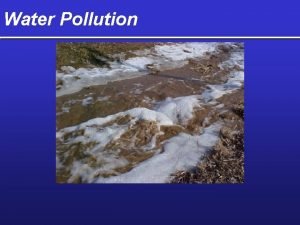Mitigation of shortlived climate pollutants slows 21 st

- Slides: 1

Mitigation of short-lived climate pollutants slows 21 st century sea-level rise Objective Under current growth rates of emissions of greenhouse gases and black carbon (BC) aerosols, global mean temperatures can warm by as much as 2°C from preindustrial temperatures by about 2050. Mitigation of the four short-lived climate pollutants (SLCPs) has been shown to reduce the warming trend by about 50% by 2050. Here we focus on a topic that has not been addressed so far the potential impact of this SLCPs mitigation on global sea level rise. Simulated global sea level changes Approach Impact The temperature projections under various SLCP mitigation scenarios simulated by an energy balance climate model are integrated with a semi-empirical sea level rise model, which is derived from past trends in temperatures and sea level changes, to simulate the future sea level rise trends. The coupled oceanatmosphere climate model – CCSM 4 is also used to estimate sea level rise trends due to just the ocean thermal expansion. Our results show that SLCP mitigation can have significant impact on future sea level rise. It can decrease the rate of sea level rise by 24~50% and reduce the cumulative sea level rise by 22~42% by 2100. If the SLCP mitigation is delayed by 25 years, the warming from preindustrial temperature exceeds 2 o. C by 2050 and the impact of mitigation actions on sea level rise is reduced by about a third. Thus to maximize the benefit of SLCP mitigation, an earlier action is appreciated. Reference: Hu, A. , Y. Xu, C. Tebaldi, W. M. Washington, V. Ramanathan, 2013, Slowing down 21 st century sea level rise through mitigation of short -lived climate pollutants, Nature Climate Change, doi: 10. 1038/NCLIMATE 1869, in press.

